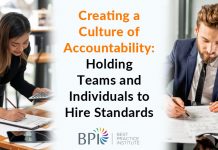Organizations That Alleviate Job-Related Stress Can Boost Employee Performance
by Rohini Anand, Senior Vice President & Global Chief Diversity Officer at Sodexo
While stress is an unavoidable consequence of modern life, the number one cause of stress is work according to Statistic Brain. Numerous surveys and studies confirm that job-related pressures and fears are far and away the leading source of stress for most people.
Stressful work environments can make employees dread going to work. We’ve all known friends and family members who have “sullen Sundays” when they can think of little else than the problems they’ll face during the week ahead. When people are unhappy, they are less efficient, less effective and less productive. In addition, they are more likely to disengage, disrupt others or quit. Stress affects more than morale—it can negatively impact a company’s bottom line, too.
We now know that the individual’s sense of control or decision-making latitude affects the severity of job stress. According to the American Institute on Stress (AIS) rankings of the “most” and “least” stressful occupations can be misleading. It is not the job but the person-environment fit that creates stress. Some people enjoy the challenge of having to juggle multiple projects and a lengthy to-do list—provided they perceive that they are in control. It’s the loss of control, the feeling of always being under pressure to keep up and meet expectations or risk losing one’s job that creates dangerous levels of stress, anxiety and angst.
The American Institute on Stress’ Main Causes of Stress chart details the major stressors—and workload is the overwhelming factor. Living with high levels of stress or anxiety not only negatively impacts an individual’s quality of life, it increases the risk and severity of many health issues including heart disease, obesity, depression and diabetes. In addition to increased annual health care costs for stressed workers, organizations are facing loss of productivity, absenteeism, turnover and disengagement. According to the AIS, job stress costs U.S. businesses more than $300 billion every year. Now is the time for organizations to make reducing stress a top priority.
Clearly, it is time for organizations to make stress reduction a top priority for their employees. Luckily there are a few simple tactics employers can implement to make that happen:
- Take the Lead
Senior managers must set the example. It is critical for them to understand that their negativity, anger, tension or anxiety can easily be passed on to colleagues and employees and that a positive attitude can be contagious and can actually alleviate stress. Managers should encourage regular breaks, time off and camaraderie in the office.
- Maintain Regular Communication
Feelings of fear, anxiety and stress result when employees are not kept up-to-date on impending changes, company direction and performance expectations. Senior leaders should keep their teams current on organizational developments, company news and new policies because creating an environment of inclusion and shared knowledge reduces stress levels. What’s more, cultivating an environment of open communication with employees will lead them to be more comfortable sharing concerns, ideas and perspectives—making for stronger working relationships and a more inclusive company culture.
- Provide Well-Being Programs
Maintaining a healthy lifestyle is one of the best defenses against stress. Company-sponsored programs can create a culture of wellness that focuses on employees’ health and vitality. Providing wellness education, making the right choices the easy choices and creating a supportive environment are all evidence of a sincere concern for their health and well-being.
- Create a “Disconnect” Space
Countless studies show that taking breaks at work to meditate, relax or simply disconnect from technology and coworkers can dramatically reduce levels of stress and burnout. Disconnecting for 15 to 20 minutes is a proven way to sustain concentration and energy levels throughout the day. Providing space for employees to disconnect and encouraging regular breaks results in employees who feel refreshed and reenergized and ready to tackle the rest of their day. The bonus? Regular breaks help employees maximize their productivity.
- Foster Flex-Time and Remote Work
Strict working hours can produce stress, particularly for parents with young children. Having a formal policy that allows employees to work remotely or practice a flexible schedule indicates trust and empowers employees to manage their own time, resulting in higher engagement and retention.
Simply put, organizations that want optimal employee performance and a stronger bottom line, have to address the factors that contribute to work-related stress with policies and practices that foster a positive culture experience.
Dr. Rohini Anand is Senior Vice President and Global Chief Diversity Officer for Sodexo, a leading provider of Quality of Daily Life Solutions with $24 billion or 17.5 billion euro in annual revenue and over 428,000 employees in 80 countries. She is responsible for the strategic direction, implementation and alignment of Sodexo’s integrated global diversity and inclusion initiatives, as well as Sodexo USA’s sustainable development and corporate citizenship strategies. Under Dr. Anand’s leadership Sodexo was honored with the prestigious 2012 Catalyst Award. In addition, Sodexo has been ranked in the top 5 for 6 consecutive years on the DiversityInc business index of Top Companies for Diversity and Inclusion. The National Restaurant Association awarded Sodexo its Faces of Diversity in Inspiration award and Working Mother Media has named Sodexo a Best Company for Hourly Workers for the third consecutive year. Today the Sodexo brand is synonymous with diversity leadership. Sodexo’s remarkable culture change, led by diversity and inclusion, was recently featured as a Harvard Business School case study.










